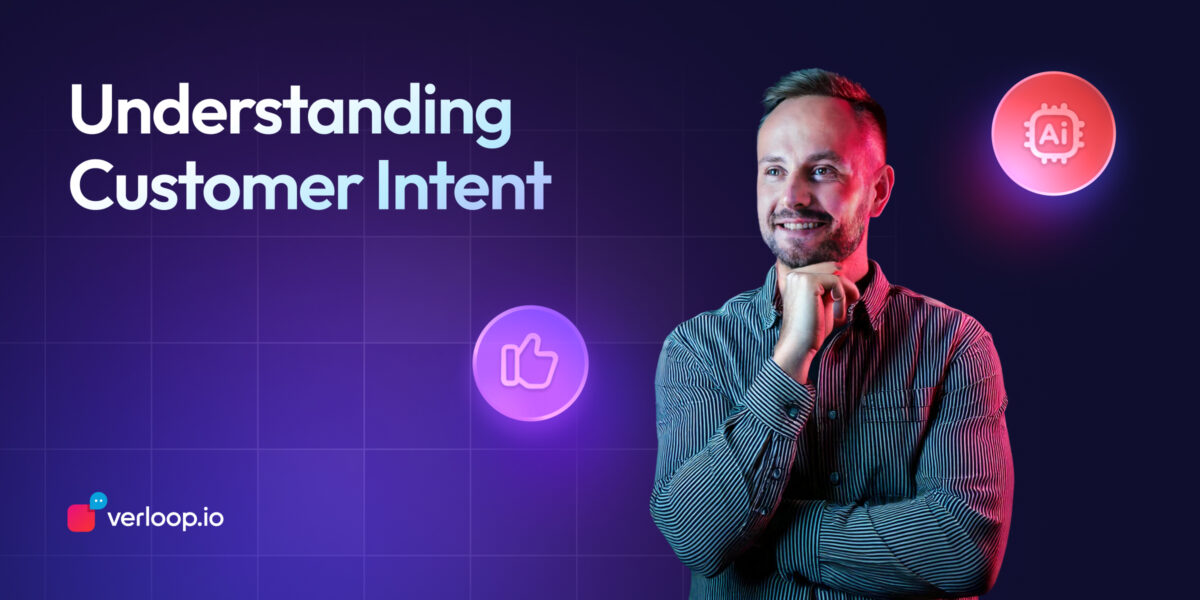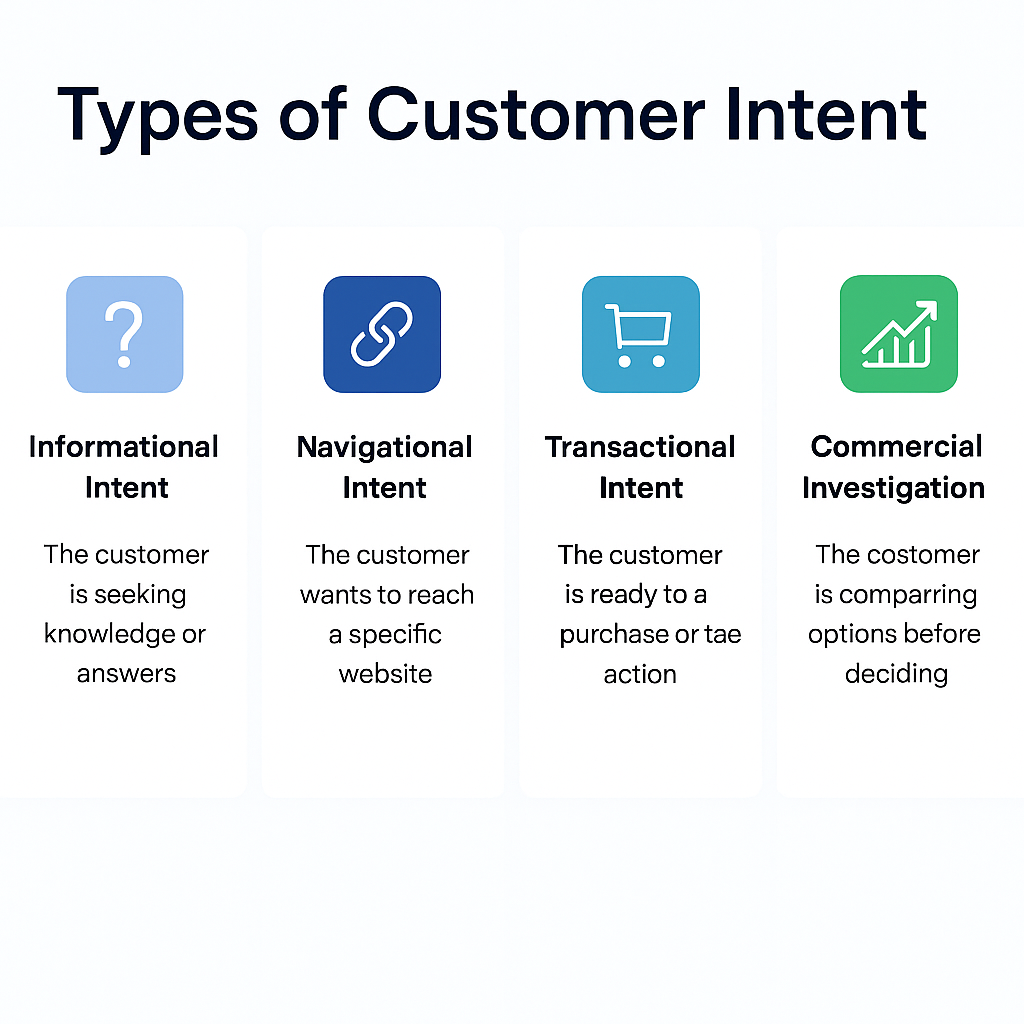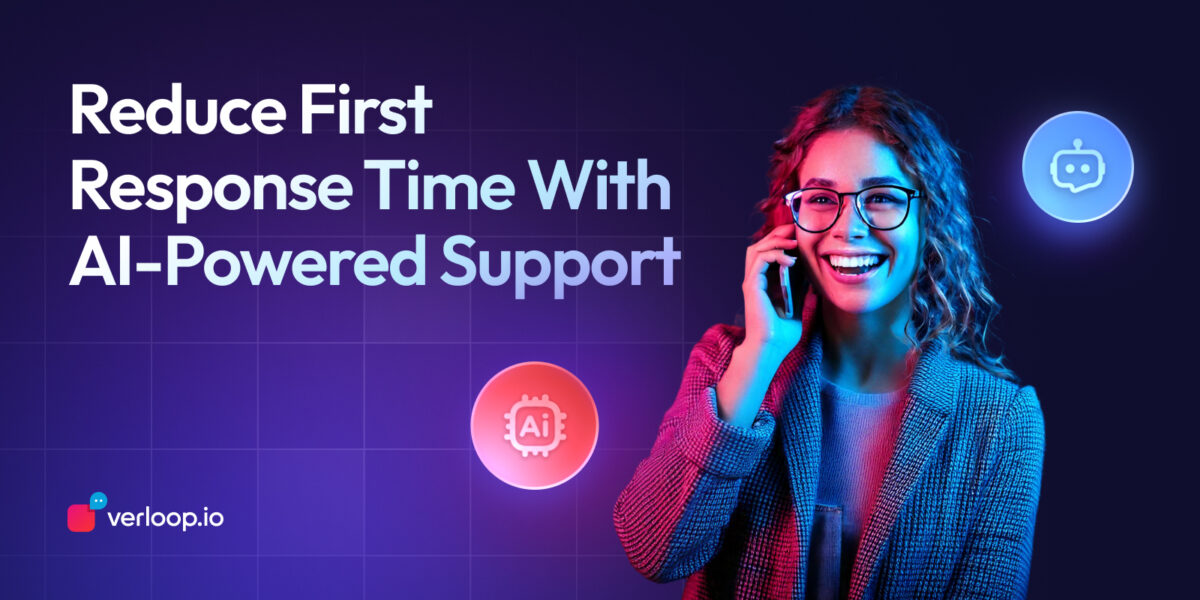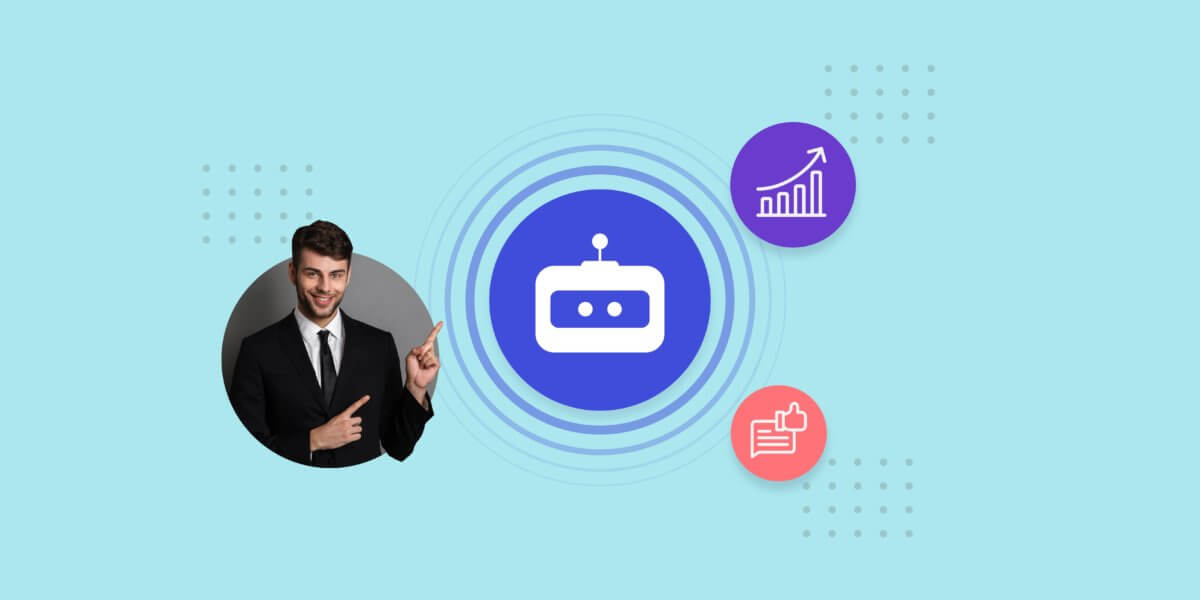
What is Customer Intent? A Complete Guide
- August 18th, 2025 / 5 Mins read
-
Aarti Nair
Customer Intent Guide
Imagine walking into a store where the salesperson already knows what you’re looking for. They don’t waste time pitching random products; instead, they guide you directly to what you need. That’s the power of understanding customer intent in the digital world.
For businesses, especially in B2B, intent isn’t just about knowing who your customers are—it’s about knowing what they’re actively searching for, when, and why. This deeper understanding allows sales and marketing teams to engage customers at the right moment, with the right message.
And companies are catching on. In fact, 73% of B2B marketers report that they are already using, or planning to use buyer intent data in the year ahead. Even more telling, 50% of business leaders say intent data is the key to aligning sales and marketing efforts.
When used effectively, customer intent data transforms outreach from guesswork into a science. It enables businesses to move beyond generic campaigns and start creating hyper-relevant experiences that resonate with what customers actually want.
This blog will serve as your comprehensive guide to customer intent—what it means, why it matters, and how you can harness it to improve engagement, drive conversions, and align your teams for success.
What is Customer Intent?
At its core, customer intent is the why behind every search, click, or purchase decision. It’s about uncovering the purpose that drives a potential buyer’s actions—whether they’re looking to compare products, seeking a solution to a problem, or ready to make a purchase.
Think of it this way: when someone types into Google, “best CRM for small businesses”, their intent is clear—they’re actively researching a tool that fits their business needs. On the other hand, a search for “what is a CRM” signals an early-stage researcher still building knowledge.
By understanding intent, businesses can tailor how they engage:
Educational content for those in the awareness stage.
Detailed comparisons or demos for those evaluating solutions.
Offers, trials, or direct sales outreach for those ready to buy.
This is why intent data has become such a priority. In fact, 70% of organisations are actively investing in customer intent analysis tools, showing just how critical it is to capture and act on these signals.
In other words, customer intent bridges the gap between what your customers are doing and what they actually want. Instead of casting a wide net and hoping for the best, businesses can craft messages that speak directly to the buyer’s needs—delivering value at exactly the right stage of their journey.
What is Customer Intent Analysis?
If customer intent is the why behind a customer’s action, then customer intent analysis is the process of uncovering and interpreting that why. It’s about looking beyond surface-level actions—like a click or a page view—and asking: What is this person really trying to achieve?
Think about it: two people land on the same product page. One is just browsing out of curiosity, while the other is seriously comparing features before making a purchase decision. On the surface, both look identical. But without analysing intent, would you know which one to prioritise?
This is where intent analysis comes in. By studying patterns such as:
Behavioural data (search queries, page visits, downloads)
Engagement signals (time spent, repeat visits, form submissions)
Third-party signals (discussions on industry forums, review sites)
…businesses can tell which prospects are ready to buy and which need more nurturing.
As we stated earlier, a growing number of organisations are recognising this need—70% of businesses are actively investing in customer intent analysis tools. Why?
Because in a world of fragmented buyer journeys, clarity is priceless.
At its core, intent analysis turns raw data into foresight—helping you focus on the right leads, deliver the right message, and build stronger alignment between sales and marketing.
Customer Motivation: The Psychology Behind Intent
Behind every click, search, or form fill lies a deeper question: why is the customer doing this right now? Understanding intent isn’t just about tracking actions—it’s about uncovering the motivations driving those actions. This is where psychology meets marketing.
At its core, customer intent is fuelled by needs, desires, and pain points. Some are rational—like finding a cost-effective solution or comparing product features. Others are emotional—such as the need for reassurance, trust, or even fear of missing out (FOMO). Recognising these drivers helps businesses craft experiences that resonate, rather than just campaigns that sell.
Think of intent in terms of three key motivators:
Problem-solving: Customers act when they have a challenge to overcome—whether that’s streamlining operations, cutting costs, or improving customer experience.
Aspiration: Beyond solving problems, intent can be shaped by goals. For example, a business leader searching for “AI chatbots” may not just want efficiency but also innovation to outpace competitors.
Trust and Security: Especially in B2B, intent often hinges on reducing risk. A buyer engaging with case studies or reviews is motivated by the need to feel safe in their decision.
This is why intent data is so powerful. It doesn’t just tell you what your customers are doing, but offers clues to why they’re doing it. When you align your messaging with these motivations—acknowledging their pain points, ambitions, and desire for trust—you move from simply selling to genuinely connecting.
Types of Customer Intent
Not every customer arrives with the same goal in mind. Some are curious, some are comparing, and some are ready to buy. Understanding the different types of intent is what allows businesses to meet customers where they are, instead of serving one-size-fits-all messaging.
Here are the main categories of customer intent:
1. Informational Intent
These customers are in the research stage. They want knowledge, not necessarily a product—at least not yet. For instance, someone searching “What is conversational AI?” is likely exploring the topic rather than buying a platform straight away. This is where educational blogs, guides, and explainer videos shine.
2. Navigational Intent
When a customer already knows the brand or product they’re seeking, their intent is navigational. Think of someone typing “Verloop.io chatbot demo” into Google. They’re not looking for alternatives—they want to get directly to you. This intent often reflects brand awareness and loyalty.
3. Transactional Intent
Here, the customer is ready to act—buy, sign up, or request a demo. A user searching “best WhatsApp Business API provider pricing” is likely weighing final options before committing. Clear CTAs, pricing transparency, and easy conversion paths become crucial at this stage.
4. Commercial Investigation
This sits between informational and transactional. Customers here are considering multiple options, reading reviews, and comparing features. For example, “Top AI chatbot platforms for e-commerce”. This is the sweet spot where detailed comparison content, testimonials, and case studies help tilt the decision in your favour.
If you think about your own browsing behaviour, how many times have you jumped from informational searches to comparison shopping, before finally hitting “buy”?
Customer journeys are rarely linear—but intent helps you decode where someone stands today.
Why is Customer Intent Analysis Important?
Think about this—how much easier would it be to engage with your customers if you knew not only who they were, but also what they were looking for, why they were searching, and how close they were to making a decision?
That’s the power of customer intent analysis.
By studying intent signals, businesses can prioritise leads that are most likely to convert, refine their messaging to match customer needs, and personalise campaigns for maximum impact. It bridges the gap between guesswork and precision, turning scattered marketing efforts into targeted conversations.
In fact, 77% of B2Bs believe that using intent data provides a competitive advantage this year. That’s because intent analysis doesn’t just tell you what customers are doing—it helps you understand the context behind their actions. For sales teams, this means focusing energy on prospects who are truly ready to engage. For marketers, it means building campaigns that resonate instead of overwhelming.
But here’s a question worth asking: are you making strategic use of the signals your customers are already giving you? Or are you leaving valuable insights untapped?
The Role of Customer Intent in the Customer Journey
Customer intent isn’t static—it shifts as buyers move through different stages of their journey. By mapping intent to each stage, businesses can anticipate needs, reduce friction, and create experiences that feel natural rather than forced.
At the awareness stage, intent often surfaces as curiosity or exploration. A potential customer might be searching for broad topics like “best marketing automation tools” or reading thought-leadership content. Here, their motivation isn’t to buy—it’s to learn. Recognising this means offering value-driven resources instead of hard sales pitches.
As they move into the consideration stage, intent sharpens. Customers begin comparing vendors, exploring features, and looking at reviews or case studies. Their questions become more specific: Which tool integrates with Salesforce? How does this solution improve ROI? At this point, intent analysis can help your business provide the right answers at the right time, nudging them closer to a decision.
Finally, at the decision stage, intent signals peak. The customer is ready to act but is motivated by reassurance—pricing clarity, proof of performance, or strong onboarding support. Misreading intent here could mean losing a deal, while aligning with it could mean winning a long-term customer.
When viewed across the journey, customer intent becomes a guiding thread. It tells you when to educate, when to engage, and when to convert. The question is—are you listening closely enough to follow that thread from the first click to the final purchase?
How to Find Customer Intent Data?
If customer intent analysis is the “why,” then data is the “how.” Businesses need reliable signals to understand what customers are actively seeking, considering, or comparing. The good news? These signals are everywhere—it’s just about knowing where to look.
1. Website Behaviour
Your own website is a goldmine of intent data. Page visits, time spent on specific product pages, downloads of whitepapers, and demo requests all indicate varying levels of interest. For example, someone reading a pricing page is leaving a stronger buying signal than someone browsing a blog post.
2. Search Queries and SEO Insights
What people type into search engines reveals a lot about their goals. Queries like “best CRM for small businesses” suggest comparison shopping, while “how to improve sales pipeline efficiency” indicates a need for education before purchase. Tools like Google Search Console, SEMrush, or Ahrefs can help uncover these intent-rich keywords.
3. Third-Party Intent Data Providers
Sometimes, the most valuable signals come from outside your owned platforms. Third-party providers aggregate behavioural data across multiple sites—such as research activity on forums, content consumption, or competitor product searches—to highlight companies showing purchase intent.
4. Social Media Interactions
Engagement on LinkedIn posts, Twitter discussions, or industry-specific groups often indicates emerging needs. When prospects comment on product comparisons or engage with competitor announcements, they’re revealing where they stand in their journey.
5. Customer Conversations and Feedback
Chatbots, support tickets, and even sales calls capture real-time customer intent. Analysing these interactions can surface recurring pain points and opportunities for upselling or cross-selling.
6. Email Engagement
Clicks, opens, and responses to campaigns all signal intent. A contact who opens every newsletter but never clicks through is curious, but the one who engages with product launch emails is far closer to making a decision.
As we stated earlier, 70% of organisations are actively investing in customer intent analysis tools. Why? Because manually piecing these signals together is time-consuming and often incomplete. Using dedicated tools and integrations allows businesses to consolidate intent data into a single view, making it easier to act on insights.
Customer Intent Data: Collection and Tools
Collecting customer intent data is much like piecing together a puzzle—you need signals from multiple sources to see the full picture. Businesses typically rely on three categories of data:
First-Party Data: These are signals that come directly from your ecosystem—such as website visits, form fills, chatbot queries, email interactions, and CRM logs. For example, if a visitor spends time on your pricing page or downloads a case study, it’s a strong indicator of intent.
Second-Party Data: Shared data from trusted partners, like educational platforms or industry networks, gives you insights into how customers behave outside your owned assets.
Third-Party Data: This is aggregated from external sources—review sites, publishers, content networks, and forums—helping you spot companies researching solutions like yours before they even visit your site.
But collecting intent signals isn’t enough; the right tools are what turn scattered data into actionable insights.
Tools for Customer Intent Analysis
CRM Platforms (Salesforce, HubSpot)
CRMs act as the central hub for first-party data. By tracking contact history, deal stages, and engagement logs, they help you identify warm accounts and align them with the buyer journey. For instance, sales teams can see which prospects engaged with webinars or clicked on high-value emails and prioritise outreach accordingly.
Marketing Automation Tools (Marketo, Salesforce Marketing Cloud)
These platforms track how prospects interact with your campaigns across email, SMS, and landing pages. They’re crucial for lead scoring, where customer intent signals—such as webinar attendance or eBook downloads—are weighted to determine how close a prospect is to making a decision.
Web Analytics (Google Analytics, Hotjar, Mixpanel)
Web analytics tools reveal behavioural intent by showing which pages prospects linger on, what content attracts repeat visits, and where they drop off. Heatmaps or session replays from tools like Hotjar can uncover hidden friction points that may stop a prospect from converting.
Intent Data Providers (Bombora, ZoomInfo, 6sense)
These tools are particularly powerful for third-party intent. For example, Bombora tracks content consumption across thousands of sites and alerts you when companies show a “surge” in research for a relevant topic. 6sense goes a step further by layering predictive AI on top, scoring accounts based on likelihood to convert. This allows both sales and marketing to engage prospects earlier than competitors.
AI- Agenst Platform like Verloop.io
AI chat and voice solutions add real-time intelligence. By analysing conversations, queries, and sentiment, they capture immediate buying intent—for example, a prospect asking “Does this integrate with Salesforce?” can be routed instantly to a sales rep or offered a tailored demo link.
When these tools are integrated, they form a powerful ecosystem: CRMs manage relationships, automation nurtures leads, analytics explains behaviour, third-party providers expand visibility, and AI-powered platforms capture live intent. Together, they not only help you collect data but also activate it—ensuring sales teams focus on the right prospects and marketing delivers hyper-relevant campaigns.
The real question is: are you using these tools in isolation, or have you built a connected system that lets intent data guide every interaction?
Turning Intent into Marketing That Drives Engagement and Sales
Customer intent data is only valuable when it’s put into action. The true power lies in transforming signals—like a prospect comparing pricing pages, downloading a whitepaper, or searching for integration options—into meaningful marketing that nudges them forward in their journey.
At its core, intent marketing is about meeting buyers where they are, with the right message at the right moment. Instead of pushing broad campaigns that treat every prospect the same, businesses can tailor communication based on real needs and motivations.
Hyper-Personalised Messaging
When you know a prospect is researching “best CRM integrations,” your email or chatbot can highlight your seamless Salesforce or HubSpot integration—making the conversation instantly relevant.
Smarter Content Recommendations
If analytics show a visitor exploring beginner-level guides, nurture them with educational blog posts. On the other hand, if they’re consuming advanced comparison sheets, it’s time to offer a case study or ROI calculator.
Sales and Marketing Alignment
As we stated earlier, intent data plays a crucial role in bridging the gap between sales and marketing. By surfacing accounts that are “in-market,” teams can prioritise outreach and reduce wasted spend on low-quality leads.
Account-Based Marketing (ABM)
Intent signals help pinpoint which companies are actively researching your category. Instead of casting a wide net, ABM campaigns can target decision-makers with personalised ads, curated webinars, and tailored offers—building trust faster.
The impact is clear: businesses that activate intent data see higher engagement rates, shorter sales cycles, and stronger conversion outcomes. It’s not about working harder; it’s about working smarter—listening to what customers are telling you through their behaviour and responding with relevance.
If intent tells you what the customer is looking for, intent marketing ensures you respond in a way that makes them feel understood.
Best Practices for Leveraging Customer Intent
Knowing customer intent is powerful—but how you use it makes all the difference. Many organisations collect intent signals but fail to translate them into meaningful action. The key lies in building a structured approach that balances data, personalisation, and timing.
1. Align Sales and Marketing Around Shared Intent Data
Intent signals shouldn’t live in silos. If marketing teams know which accounts are actively researching your product category, sales must have access too. A shared dashboard in your CRM or marketing automation tool ensures both sides act on the same insights, reducing wasted effort and strengthening collaboration.
2. Focus on Quality Over Quantity
Not all signals are equal. A casual website visit is different from someone spending 20 minutes on your pricing page. Prioritise high-intent behaviours and score them accordingly to avoid overwhelming your teams with noise.
3. Personalise at Scale
Intent data makes hyper-personalisation possible. Instead of sending generic campaigns, tailor your outreach based on what the customer is showing interest in. For instance, if a prospect is searching for “voice AI for customer support,” your follow-up shouldn’t just mention AI—it should explain exactly how your voice solution solves their problem.
4. Respect Customer Privacy
Today’s customers are increasingly aware of how their data is used. Transparency builds trust. Always make sure your use of intent data complies with GDPR, CCPA, or other data protection standards, and communicate how customers benefit from sharing their preferences.
5. Use the Right Tools to Capture and Analyse Signals
As we discussed earlier, many organisations are investing in customer intent analysis tools. Platforms like Bombora, 6sense, and ZoomInfo track digital footprints across the web, while Google Analytics, HubSpot, or Salesforce can reveal intent through on-site behaviour. Together, these tools provide a complete view of where your buyers stand in their journey.
6. Test, Measure, Refine
Intent data is not a one-and-done process. Continuously test your messaging, measure results, and refine your campaigns. What works for top-of-funnel awareness might not resonate at the decision-making stage.
By following these best practices, businesses not only improve targeting and engagement but also create a buying experience where customers feel understood at every step. And that’s the difference between intent data being just another metric and becoming a true growth driver.
Challenges and Pitfalls in Customer Intent Analysis
Customer intent analysis can feel like unlocking a secret code to your buyers’ minds. But like any powerful tool, it comes with its own challenges. Many organisations stumble not because intent data isn’t valuable, but because they overlook the common pitfalls that come with interpreting and applying it.
Here are some of the most common challenges—and how businesses can solve them:
| Challenge | Impact | Solution (with AI Agents) |
|---|---|---|
| Misinterpreting Signals | Treating all clicks or downloads as buying intent leads to wasted resources. | Use AI-powered scoring models and AI agents to differentiate between casual browsers and high-intent leads, flagging only qualified opportunities for sales. |
| Data Overload Without Context | Teams drown in massive datasets without actionable insights. | AI agents can process intent data in real time, filter noise, and surface only the most relevant signals aligned with the customer journey. |
| Lack of Integration Across Teams | Sales, marketing, and support work in silos, causing missed opportunities. | AI agents act as connectors, syncing insights across CRM, marketing automation, and customer support tools to ensure every team acts on the same data. |
| Over-Personalisation Risks | Customers may feel “creeped out” if outreach feels too targeted. | AI agents can personalise at scale while respecting boundaries, e.g., by tailoring messages based on intent clusters instead of overly granular signals. |
| Dependence on Tools Without Strategy | Businesses invest in platforms but fail to extract ROI. | AI agents don’t just collect signals—they continuously learn from outcomes, refining strategies so businesses act with precision rather than guesswork. |
| Privacy and Compliance Concerns | Mishandling intent data risks legal and reputational damage. | AI agents built with compliance frameworks (GDPR, PDPA, HIPAA) can help businesses anonymise, protect, and responsibly use customer data. |
1. Misinterpreting the Signals
Not every click or download means a customer is ready to buy. Someone reading your whitepaper might just be exploring, while another visiting your pricing page is far closer to conversion. Treating all signals equally can lead to wasted effort and missed opportunities.
2. Data Overload Without Context
The volume of data can be overwhelming. Organisations often gather vast amounts of intent data without the right systems to filter or contextualise it. Without context, you risk drowning in noise rather than uncovering meaningful insights.
3. Lack of Integration Across Teams
Sales, marketing, and customer success teams often operate in silos. If intent data isn’t shared effectively, opportunities are missed. A prospect flagged by marketing might already be in conversation with sales—or worse, ignored entirely.
4. Over-Personalisation Risks
Personalisation is powerful, but it has a fine line. Acting on intent signals too aggressively can make customers feel like they’re being tracked too closely. For example, mentioning a niche search term in an outreach email can come across as intrusive rather than helpful.
5. Dependence on Tools Without Strategy
As we noted earlier, many businesses are investing in intent data platforms. But tools alone won’t solve the problem. Without a clear strategy—knowing what signals matter, when to act, and how to measure impact—technology becomes an expensive but underutilised asset.
6. Privacy and Compliance Concerns
In an era of heightened privacy regulations, mishandling intent data can erode trust and even lead to legal repercussions. Businesses must ensure compliance with data protection laws and be transparent with customers about how their information is used.
The lesson here?
Customer intent analysis is not about collecting every possible signal—it’s about focusing on the right ones, aligning teams, and applying insights responsibly. When done wrong, it adds noise. When done right, it sharpens your competitive edge.
The Future of Customer Intent – Trends and Innovations
Customer intent is no longer just about what a buyer is doing, but why they’re doing it. As technology evolves, intent analysis is shifting from reactive insights to predictive intelligence—helping businesses anticipate needs before customers even voice them.
So, what lies ahead?
1. AI Agents as the New Frontline
The next wave of customer engagement will be powered by AI agents—both chat and voice—capable of interpreting customer intent in real time. Imagine an AI agent not only detecting that a prospect downloaded a product guide but also predicting their next likely question, then proactively reaching out with tailored recommendations.
2. Deeper Predictive Modelling
With advanced machine learning, businesses will move from simply tracking clicks and searches to predicting purchase probability. Intent models will start factoring in behavioural nuances like time spent on comparison pages, sequence of actions, or even subtle language cues in chat.
3. Omnichannel Intent Recognition
As buyers hop between channels—WhatsApp, email, live chat, voice calls—intent data will be stitched into a single customer view. AI agents will play a central role here, ensuring context flows smoothly no matter where the conversation happens.
4. Voice and Emotional Signals
The future won’t just be about “what” customers type but how they sound and feel. Sentiment analysis, voice tonality, and even pause detection will allow AI agents to respond empathetically, making intent recognition more human-like.
5. Privacy-First Innovation
With increasing scrutiny on data use, intent analysis tools will evolve towards privacy-preserving AI. Expect more innovations in federated learning, anonymised datasets, and transparent consent mechanisms. Businesses that balance personalisation with respect for privacy will win long-term trust.
6. Integration with Sales and Marketing Orchestration
Instead of being a marketing-only tool, customer intent will become the shared foundation across revenue teams. AI-driven orchestration will ensure every outreach—from ads to calls—is timed and tailored to intent, reducing waste and boosting conversions.
The bottom line: the future of customer intent isn’t about collecting more data, but about making it actionable through AI agents, predictive modelling, and ethical innovation. Businesses that invest now will not just react to customers’ needs but anticipate them—turning intent into an engine for growth.
Making Customer Intent Central to Your Strategy
At its core, customer intent is the compass that guides every meaningful interaction between a business and its buyers. Organisations that treat intent as an afterthought often find themselves chasing leads blindly, while those that place it at the centre of their strategy create experiences that feel natural, timely, and personal.
The real game-changer lies in how intent is acted upon. This is where AI agents—both chat and voice—step in. Unlike static campaigns or rigid scripts, AI agents can analyse signals in real time, detect shifts in intent, and respond instantly with tailored answers or offers. Whether it’s nurturing a lead who’s just comparing options or converting a ready-to-buy customer on a call, AI agents do the heavy lifting, ensuring no opportunity slips through the cracks.
Customer intent isn’t just about recognising interest; it’s about aligning your sales, marketing, and support teams to anticipate needs and deliver at the right moment. By combining the precision of intent analysis with the responsiveness of AI agents, businesses can move from simply engaging customers to truly understanding them—at scale.
In the year ahead, the most successful organisations will be those that don’t just track customer intent but embed it into their strategy, powered by AI agents that make every interaction smarter, faster, and more human.
Frequently Asked Questions about Customer Intent
1. What is customer intent in marketing?
Customer intent refers to the underlying reason a buyer interacts with your brand. It’s about understanding whether someone is researching, comparing options, or ready to make a purchase. Analysing intent helps businesses tailor messages to meet customers where they are in their journey.
2. How is customer intent analysis different from customer behaviour analysis?
Customer behaviour tracks what people do — clicks, page visits, downloads. Customer intent analysis goes deeper by uncovering why they’re doing it. For example, visiting a pricing page signals higher purchase intent than reading a blog post.
3. What types of customer intent should businesses track?
Broadly, customer intent falls into three types: informational (seeking knowledge), navigational (looking for a specific brand/product), and transactional (ready to buy). Many businesses also track micro-intents like renewal, churn risk, or upsell opportunities.
4. What tools are used to analyse customer intent?
There are specialised intent data platforms such as Bombora, G2 Buyer Intent, and Demandbase. Analytics tools like Google Analytics, Hotjar, and SEMrush also provide signals. Increasingly, businesses are combining these tools with AI agents that can read intent signals in real time and respond instantly.
5. Why is customer intent important for B2B businesses?
In B2B, buying cycles are longer and involve multiple stakeholders. Intent data helps sales and marketing teams focus on the right accounts at the right time. It aligns teams around shared insights and avoids wasted effort on leads that aren’t ready.
6. How do AI agents improve customer intent analysis?
AI agents (chat and voice) don’t just collect data — they act on it in real time. For example, if a prospect shows buying intent on your website, an AI agent can immediately engage with personalised messaging or even qualify the lead. This ensures faster response times and higher conversion rates.
7. What are the common challenges in using customer intent data?
Some pitfalls include relying on incomplete data, misinterpreting weak signals, or bombarding customers with generic outreach. Overcoming these requires good data hygiene, context-based analysis, and tools (like AI agents) that adapt conversations dynamically.
8. How can small businesses use customer intent analysis?
Even without big budgets, small businesses can leverage basic tools like CRM systems, Google Analytics, and email engagement data to spot patterns. Adding lightweight AI-powered chatbots can further help in capturing and responding to intent signals efficiently.
9. Can customer intent data really give a competitive advantage?
Yes. As mentioned earlier in this blog, 97% of B2Bs believe intent data provides a competitive edge this year. The difference lies in execution — those who embed intent analysis into every touchpoint and act quickly using AI-powered tools see the most impact.
10. What’s the future of customer intent analysis?
The future lies in predictive capabilities. Businesses will move from reacting to intent signals to anticipating them. With AI agents analysing behaviour patterns, companies will be able to predict needs before customers even express them.













